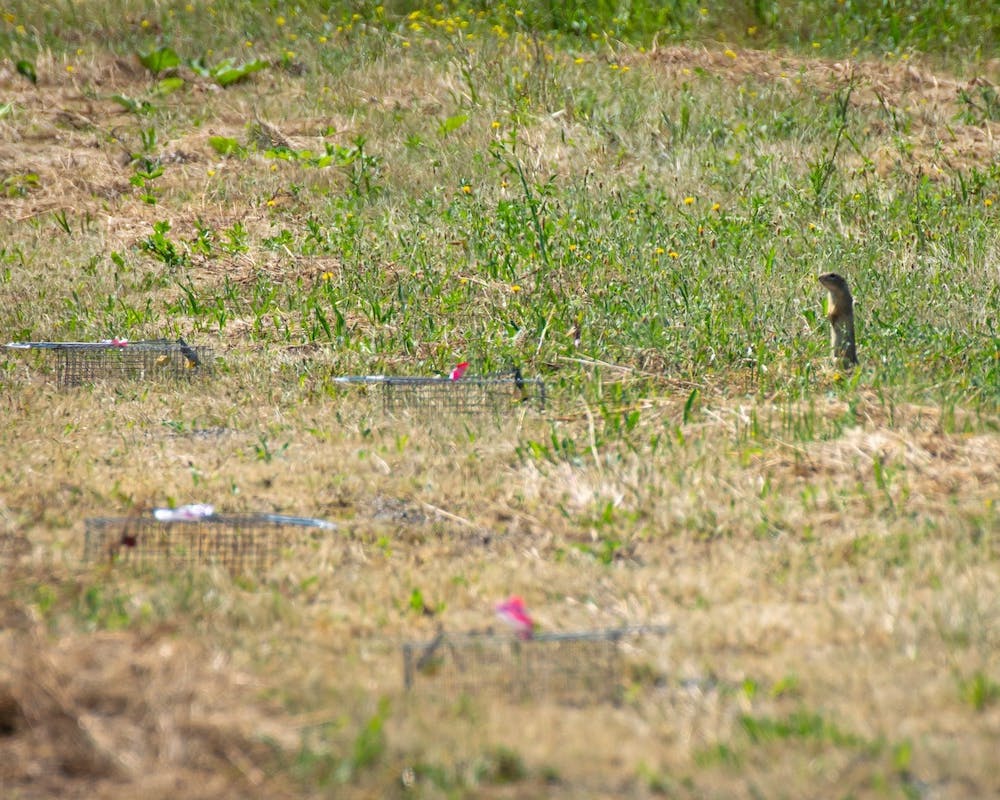- Our Understanding of 'Evidence'
- Our Collaboration with Conservation Evidence
- What we are doing - using evidence
- Reviewing evidence for key project assumptions
- What we are doing - generating evidence
- Evidence as impact
- Sharing negative results
- Addressing the research-practice gap
- Challenges and Limitations
- Technology: A Potential Game-changer
- Resources and Further Reading:
Restoring ecosystems and biodiversity in a cost-effective way is at the core of what we aim to do at Mossy Earth. An important part of how we seek to achieve this is by using and generating scientific evidence. We continuously make complex decisions on if and how to intervene in nature. We believe we will be able to achieve much more with our limited resources if these decisions integrate the best available evidence. Other fields, such as medicine, recognised the limitations of relying solely on subjective judgements and anecdotal evidence which prompted a transition to integrating the latest scientific evidence into decision making that vastly improved healthcare outcomes. We believe a similar paradigm shift is happening in the world of conservation and ecological restoration. We want to be a part of it by integrating these principles into our work on the ground.
Our Understanding of 'Evidence'
Although the emphasis is on scientific evidence, we borrow a definition of evidence as: ‘relevant information used to assess one or more assumptions related to a question of interest’. This includes peer reviewed studies, reports as well as citizen science observations and local knowledge.
The key for us is that there is clarity about how important assumptions are justified. In this view, the value of expertise or local knowledge is that it allows relevant evidence to be found, integrated, contextualised and applied effectively and not that it provides a justification for a certain course of action in and of itself.

Our Collaboration with Conservation Evidence
To help us put these principles into practice, we have established a partnership with the Conservation Evidence team at the University of Cambridge. They have been spearheading the movement towards evidence-based conservation from the very beginning by arguing for its importance and providing very useful free resources that make it easier to put into practice.
We are part of their Evidence Champions programme and they have helped us design our current approach to selecting, planning and monitoring our projects. Below, we outline the key points where evidence comes into what we do. If you’d like additional context, check out our broader rewilding methodology.

What we are doing - using evidence
Reviewing evidence for key project assumptions
It is part of our approach to developing new projects to question what the evidence base is as early as possible. This is important because it encourages us to consider steering project design before a lot of effort has been put into a specific course of action.
First the project team explains rationale for how the proposed action will lead to long term ecological change and how this compares to a scenario where nothing is done. Then, we identify the key claims and assumptions being made within this rationale and work with the project team to clarify what evidence there is to support each of them. Although it takes a bit longer than simply laying out a plan, the outcome of this process is usually a great investment.
If we find that there is robust evidence for each claim and the rationale is very sound, the management plan becomes a very clear justification for the chosen course of action. This can help gather buy-in from stakeholders and allows us to communicate more effectively about the project. On the other hand, if there is limited evidence to support some of the key claims or assumptions, the project team can seek alternative actions to achieve the same objectives. Alternatively it may be possible to use an experimental design that allows new evidence to be generated to test the assumptions that are on shaky grounds. If done correctly, this process should allow us to ensure that every project delivers impact, allows us to learn an important lesson or both.

What we are doing - generating evidence
Evidence as impact
The other side of the coin is that we believe generating and sharing scientific evidence itself can be a form of impact when it helps make future projects more successful. It can reveal information about an ecosystem or about the effectiveness of a given action that directly influences the design of future projects.
What is particularly exciting is that if we make this information easily available to others following open access principles, we can go beyond improving the way we run our projects and actually help others do the same. An important step we have taken to put this into practice is that we dedicate a section in our project management plans to outline what evidence may result from the project, and how and where it will be analysed, synthesised and shared.

Sharing negative results
We also do our best to share negative results when things don’t go as planned. This is very important because it can help prevent others from repeating any mistakes we have made or at least help them calibrate their expectations of success if they pursue a similar action.
An important yet simple way that prevents us from contributing to publication bias is to be clear about our objectives for a project before we start and to make this information publicly available. We do this by sharing the management plan for the project and explaining our goals in our project pages and YouTube videos. This is comparable to the pre-registration of scientific articles where researchers specify the hypothesis they intend to test before actually carrying out their research, which can help improve the validity of research findings. This prevents us from cherry-picking success stories from our project portfolio and means that sharing any mistakes or failures is the status quo.

Addressing the research-practice gap
We believe that one of the best ways to generate useful evidence is by combining research and practice. Practitioners bring in an understanding of the social and ecological context surrounding an action and an awareness of what knowledge gaps most affect their ability to deliver impact. They will also most often be the ones with the financial and technical capacity to test ecological interventions at scale. Researchers on the other hand can bring in scientific expertise and the ability to design robust experiments that will advance our understanding of what works best.
However, this type of knowledge co-production is often neglected, perhaps because the two groups have distinct priorities and incentives. Practitioners may under-appreciate the value of using more robust approaches to testing interventions and favour acting fast and using simpler study designs even if these are at greater risk of producing inaccurate results. This is made easier by the fact that impact is often assessed by funders and stakeholders that don’t have the skills or inclination to evaluate study design and to demand more robust testing of interventions. On the other side of the spectrum, publishing a study that compares the effectiveness of two ecological interventions may prove to be very useful for practitioners but not be very attractive to a researcher whose career trajectory would benefit more from focusing on making a more impressive scientific breakthrough.
There are of course numerous research groups, private and public organisations that do excellent work on this front. In our role as practitioners and funders, we think we can help move things in the right direction by looking for opportunities to keep adding bricks to the bridge between research and practice.

Challenges and Limitations
There is still a lot of room for improvement in terms of our approach to using and generating evidence and we have identified some challenges as we make progress on this front. We believe these areas that require more attention from us are worth sharing.
Lack of Baseline Data:
One of the challenges we face is the absence of comprehensive baseline data for the species or ecosystems we are focusing on. In some of these cases, designing the project in a way that allows us to infer cause and effect may require us to postpone implementation and increase the overall project budget. Choosing if that’s the appropriate thing to do is not always straightforward as we have to weigh up how confident we are that the action will be effective (based on existing evidence); how urgent the intervention is; and and how important it is for us to rule out any confounding factors in this particular instance.
Ecological Change Takes Time:
Ecological change typically occurs over extended periods of time. This means that actually demonstrating change requires a commitment to long term monitoring that can be difficult to fund and organise.
Complex interventions:
Causal inference becomes challenging when multiple interventions are carried out simultaneously or when the approach changes as the project progresses. This is common in landscape scale rewilding projects where multiple issues are addressed simultaneously to maximise impact.
Generating evidence demands capacity:
Developing more robust experimental designs often requires additional time and resources for planning, monitoring, and data analysis and this is not always possible to arrange.

Technology: A Potential Game-changer
Advances in technology, such as drones, satellite monitoring, artificial intelligence (AI), and environmental DNA (eDNA) analysis, offer great potential for enhancing our ability to gather data cost-effectively. Drones and satellite monitoring provide valuable tools for mapping and monitoring ecosystems at various scales, enabling us to collect spatially explicit data on habitat characteristics, species distributions, and landscape changes. AI algorithms can assist in processing and analyzing large datasets, identifying patterns, and making predictions, thereby accelerating our understanding of complex ecological systems. Furthermore, eDNA analysis allows us to detect the presence of species in environmental samples, offering a non-invasive and efficient method for biodiversity monitoring over time.
We are already using many of these tools in our projects and we expect they will become more important over time. As the cost of data collection goes down, the case for evidence based practice will only grow stronger. Having said this, we think it is important not to get carried away by the excitement of these new technologies. In many cases, the most cost-effective approach will be to use a simple low tech monitoring protocol.


Resources and Further Reading:
- The recently published open access book which is our go to when it comes to embedding evidence into conservation decision making.
- The open access online database created by the Conservation Evidence team which allows users to quickly evaluate the evidence about the effectiveness of thousands of conservation actions.
- A discussion of how to bridge the research practice gap.
- A study making the case for the importance of robust experimental design to assess the effect of actions.